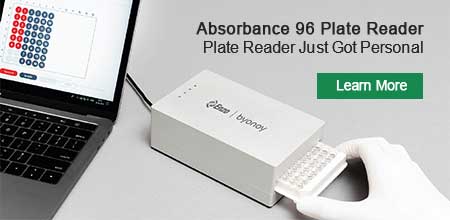Replaces Prod. #: ADI-EKS-446
- Fast- measure the active form of NFκB p65 in just 1.5 hours
- Higher throughput - 96 well plate based method faster than EMSA and Western blot
- Sensitive - colorimetric detection
The NFκB p65 ELISA kit allows the accurate measurement of total and phosphorylated human NFkB p65 in cell lysates. This ELISA uses the traditional sandwich ELISA format, but with a major difference: both the sample and the assay reagents can be added to the assay microplate at the same time. Since the antibodies are not precoated in the wells, several different targets can be analyzed simultaneously in the same plate in different wells. With this kit a mixture of capture and detection antibodies against either phosphorylated or total NFkB can be added to the sample lysate, thus enabling their detection with a simple 1-hour protocol.
Product Details
| Assay Time: | 1.5 hours |
| |
| Applications: | ELISA
|
| |
| Application Notes: | For the quantitative determination of active NFκB p65 in cell lysates of human, mouse, and rat origin. |
| |
| Wavelength: | 450 nm |
| |
| Species reactivity: | Human, Mouse, Rat
|
| |
| Use/Stability: | Reagents require separate storage conditions upon receipt. |
| |
| Shipping: | Blue Ice |
| |
| Short Term Storage: | +4°C |
| |
| Contents: | Microtiter plate, cell lysis buffer, 10X wash buffer, detection reagent, stop solution, plate sealer, capture antibody, detector antibody, positive control lysate |
| |
| Scientific Background: | Stimulation of the canonical NFκB pathway leads to the phosphorylation of and subsequent degradation of IκB; phosphorylation of the latter is controlled by a specific set of proteins referred to as the I Kappa Kinases (IKK), which include IKKα and IKKβ. Under normal conditions, IκB acts as a key regulatory molecule in that it sequesters p65 or Rel A within the cytoplasm; this blocks NFκB dependent transcription. Upon phosphorylation of IκB by IKK’s, p65 is released and free to associate with the p50 subunit; p65 acts as a transactivator whereas p50 possesses DNA binding activity. Complex formation leads to the subsequent translocation of the NFκB complex into the nucleus and the concomitant up-regulation of NFκB dependent genes. Disruption of this signaling nexus has been documented in a number of human pathological conditions including inflammation, infection and cancer. |
| |
| Regulatory Status: | RUO - Research Use Only |
| |
| Compatibility: | This product is compatible with the Absorbance 96 Plate Reader.
 |
| |
Product Literature References
Anticancer activity and metabolic alteration in colon and prostate cancer cells by novel moxifloxacin conjugates with fatty acids: A. Chrzanowska, et al.; Eur. J. Pharmacol.
940, 175481 (2023),
Abstract;
Micellar Curcumin Substantially Increases the Antineoplastic Activity of the Alkylphosphocholine Erufosine against TWIST1 Positive Cutaneous T Cell Lymphoma Cell Lines: A.G.X. Trochopoulos, et al.; Pharmaceutics
14, 2688 (2022),
Abstract;
In Vitro Antineoplastic and Antiviral Activity and In Vivo Toxicity of Geum urbanum L. Extracts: M.M. Zaharieva, et al.; Molecules
27, 245 (2021),
Abstract;
Related Products











